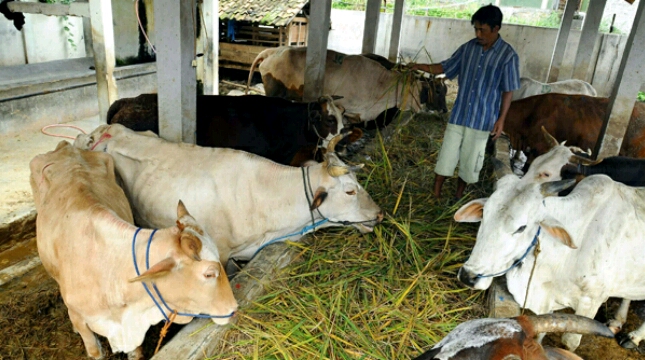Future development of dairy cattle population should be based on genetic identification of superior bulls. Genetic identification of spermatozoa quality is expected to support the acceleration of Friesien Holstein (FH) dairy cattle population. The genetic identifier is needed, especially for reproduction control so that superior male FH dairy cows in artificial insemination centers can be held responsible for their quality because these bulls can spread their superior traits to offspring.
So far, the identification of spermatozoa quality in males as a measure of fertility is only done through macroscopic and microscopic examination. The identification of fertility level is also seen from physical appearance and tracing heritability (lineage). However, this test is less accurate, because good characteristics will not necessarily be inherited through marriage and heritability tests take a long time to do, making it inefficient.
Osteopontin potential as a biomarker
The basic determination of osteopontin as a biomarker in determining the fertility of FH dairy cows is based on several previous studies which showed that osteopontin levels in semen of FH dairy cows with good fertility have a 2.5 times more osteopontin concentration compared to dairy cows with low fertility.
Some evidence shows that there is a relationship between osteopontin promoter gene polymorphisms and the semen fertility of bulls. Determination of osteopontin gene promoter region based on previous research obtained seven single nucleotide polymorphism (SNP) regions that act as osteopontin promoters, including: 3379 bp, 3490 bp, 3492 bp, 5075 bp, 5205 bp, 5209 bp and 5263 bp osteopontin gene promoter, which is associated with semen quality, especially the movement of spermatozoa.
A research was conducted by taking blood samples from 14 3-5-year-old FH male dairy cows obtained from Singosari Artificial Insemination Center, Malang, East Java, and local dairy farmers. The volume of the taken blood sample was 3cc from each bull. Blood samples were put into EDTA vacuum tubes and labeled according to the names of each animal samples. The samples were then stored at 40 °.
DNA isolation was done on FH blood samples of bulls using an isolation kit from Geneaid, then proceed with DNA quantity and quality tests using Micro-Nano-200 nucleic acids spectrophotometer. DNA samples were amplified using the Polymerase Chain Reaction (PCR) method. Primers used for DNA amplification by PCR were designed using NCBI Genebank: AY878328.1. Ordering PCR products from the Osteopontin gene using primers SPP1_F 10 pmol and 10 pmol SPP1_R. The DNA concentration of PCR products required was at least 50 ng / mL to sort the adenine, thymine, guanine, and cytosine content contained in DNA fragments that have been labeled by ddNTPs.
Meanwhile, fresh semen was also collected using an artificial vagina. An artificial vagina was prepared with an internal temperature of 45ºC and has been smeared with vaseline. Males are stimulated by using artificial cows and then collected semen was examined macroscopically including its volume, color, odor, pH, and viscosity, as well as microscopic examination including spermatozoa movement and spermatozoa count.
Based on the quantity of cement isolation, it was known that almost all samples have a good level of purity in the range of 1.8 to 2.0 and all samples have concentrations above 100 ng / mL. If the purity value of DNA is below 1.8, it indicates that there are contaminants in the form of protein compounds in DNA extraction results. The contamination can be caused by the addition of protease enzyme to the DNA isolation protocol. DNA purity values above 2.0 indicate contaminants in the form of RNA.
The results of this study showed that there is a correlation between gene sequences and spermatozoa count data. Gene sequences experiencing deletions or deletions in their base order have low spermatozoa counts. This gene mutation can be associated with susceptibility to semen fertility.
Author: Tatik Hernawati
Details of research can be viewed here:
Tatik Hernawati, Yudit Oktanella, Sri Mulyati, Rimayanti, Tri Wahyu (2019). Correlation between Osteopontin Promoter Gene and Fresh Semen Quality in Friesian Holstein Dairy Cows. Research J. Pharm. and Tech. 12(4): April 2019, 1677 – 1682. DOI: 10.5958/0974-360X.2019.00280.4





